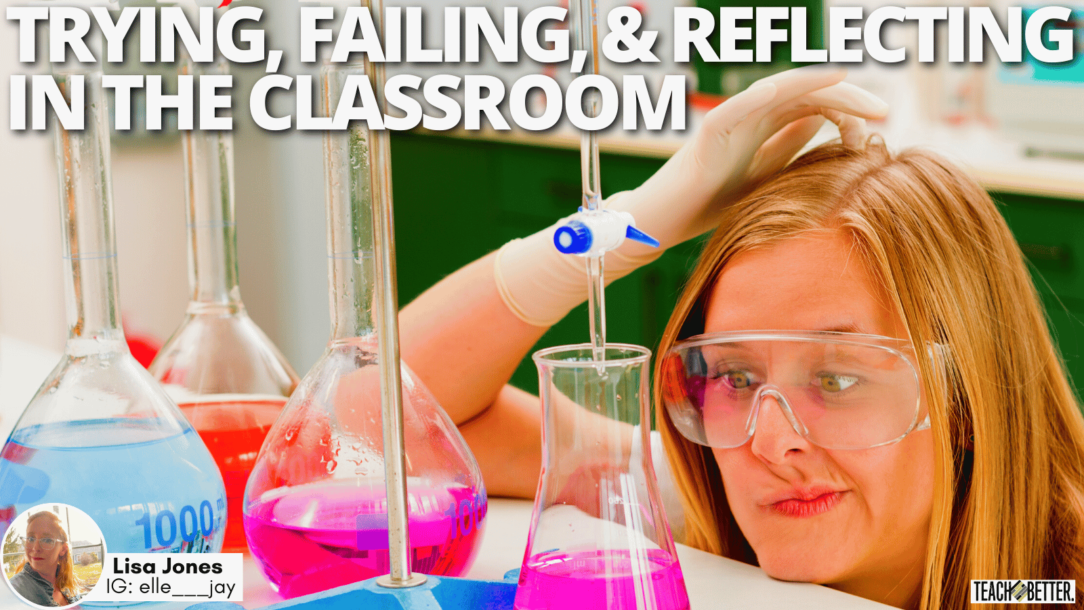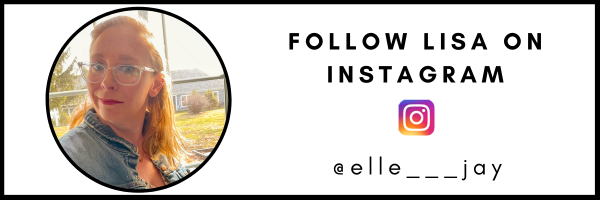TL;DR:
- The blog recounts Lisa’s experience when a web filter disrupts a classroom activity.
- Embracing failures when trying new teaching methods sets a good example for students.
- It delves into the teacher’s approach to handling mistakes, the impact on students, and the necessity of reflecting for continuous improvement.
When I Try Something New
“Mrs. Jones, it’s blocked!!!”
“HEY! I can’t get on the website.”
“Something is wrong with the link!”
“Why isn’t this working!!”
No less than 10 minutes into the first period of my day, I heard shouts scattered around my classroom. At this moment, my heart dropped into the deepest pit of my stomach. I started to wonder how long it will take before chaos ensues, and I am at the mercy of 26 hormonal 12 to 14-year-olds. I rushed to look at the nearest student’s Chromebook, and sure enough, I saw it: the dreaded blue lock.
That cerulean lock is my savior most days. But on this Tuesday, it forces me to scramble and come up with a plan B quickly. The blue lock of death is our web filter, indicating the bridge design game that most of my students were excited to try out is now blocked. It’s the last day of our architecture and construction unit. The kids who have finished their project have a chance at an extension challenge. The promise of a leaderboard and candy has proven very enticing, and now it’s crushed by a well-meaning but frustrating web filter.
An epic teacher fail is bound to happen when you try new things or your technology isn’t cooperating. It’s how you handle these moments that show your students who you are. Click To TweetWhen I Fail
It becomes a running joke in my first class of the day that they get all of my screw-ups. Honestly, that is true. An epic teacher fail is bound to happen when you try new things or your technology isn’t cooperating. It’s how you handle these moments that show your students who you are.
If you’ve already read my previous post about encouraging problem-solving in your classroom, you know one of my classroom mottos is “What’s the worst that can happen?” When students are afraid to try something new or challenging, my most common response is, what’s the worst that can happen?
It’s no different when I am doing new and challenging things myself. Whether it’s a new assignment that wasn’t formatted quite right, the copies are stapled weirdly, a lesson that I just don’t explain well enough, or a management issue I could have handled better, I think it’s always important to recognize my own failures in the classroom.
The looks on the students’ faces when I laugh at myself and say “teacher fail” the first time is always one of my favorites. It’s normally a mixture of confusion and amusement. Yep, I’m a human, everyone, I mess up daily, and that’s okay. In that moment, deciding on the best way to resolve the situation with as much grace as possible is usually my goal. And sometimes I can actually manage it with laughter and calm.
When It Doesn’t Go Well
However, I’m not going to lie and say I always manage it well. It’s so frustrating when you take time and effort to plan out what you think will be a great lesson and something goes sideways. I think sometimes people forget that teachers are humans, too, and we can find ourselves frustrated like anyone else. More times than I care to count, I’ve had to apologize because we were all frustrated in the moment. Just like the laughter when it’s a pleasant derailment, the sincerity of acknowledging that you were wrong or apologizing can change the vibe in mere moments.
I swear these moments happen to me at the most inconvenient times. Usually, it’s the days when the kids are wound up, and I’m holding on to the reigns by the very ends. I tell myself, “That’s it, I’m not doing that ever again!” Sometimes I mean it, and sometimes I don’t.
[scroll down to keep reading]When It’s Time to Reflect
After surviving and recovering from moments of failure, it is essential to reflect and adjust. Sometimes that adjustment can be a quick question to my first class of the day. “Well, I didn’t do a very good job explaining that, did I? What could I do better next period?” Usually, the first time I do this the kids look at me like I’ve started speaking Latin. However, someone will always get brave enough to raise their hand and give me a suggestion. Do you want to talk about a scary moment as the teacher? That 30 seconds of waiting, feeling fully exposed as you ask your middle schoolers, who can be as vicious as a school of piranhas, to tell you what you can improve on. But…some of the most useful feedback I’ve gotten as a teacher has been in these moments.
Sometimes adjustments just can’t happen on the fly. I am lucky that I teach courses that are only one nine-week term long. This allows me to reflect and make modifications in a matter of weeks rather than months.
Strategy for Reflecting
I do my course mapping on Google Sheets so I can add links and have everything in one place. After lessons that need modifications, I use the comment feature to add dialogue boxes to the cells with those lessons. I never delete the lesson from the plan for that quarter. I don’t want to forget that I tried it and didn’t like it. Usually, I try to describe what the issue was; maybe the website needed updating, maybe the passage was too hard, or the lesson took longer than expected.
Taking those few minutes after a lesson to figure out what changes need to be made is essential for classroom success. That…and a broom, a giant cup of coffee, and more than a few vocabulary Gimkits and Blookets up my sleeve.
About Lisa Jones
Lisa has been teaching middle schoolers in a Title 1 school since 2004. She started her career as an intervention specialist working both in a variety of co-taught general education classrooms as well as in self-contained and content learning classrooms. In 2018, she moved from a co-taught classroom into the world of Career Technical Education and hasn’t looked back since.
Lisa currently teaches an Exploring Careers course for 7th grade and her district’s first-level engineering course, Design and Modeling, for 8th graders. These classes include a wide variety of students including beginning-level English language learners, a variety of students with disabilities at all levels, the “typical” general education student, and gifted students. She’s a big believer in hands-on real-world experiences for students to help them see the world beyond the classroom.
On any given day her students can be learning how to read a pay stub or using paper airplanes to reinforce measurement skills. To prepare every student with skills that will carry them through adulthood, Lisa’s focus this year has been to build problem-solving and communication skills. Her goal is to provide as many unique opportunities for her students as possible so they can see the opportunities that are available to everyone. If asked she’ll tell you that, “if you had told me years ago that career tech would be my jam I wouldn’t have believed you but now I can’t imagine doing anything else.”




